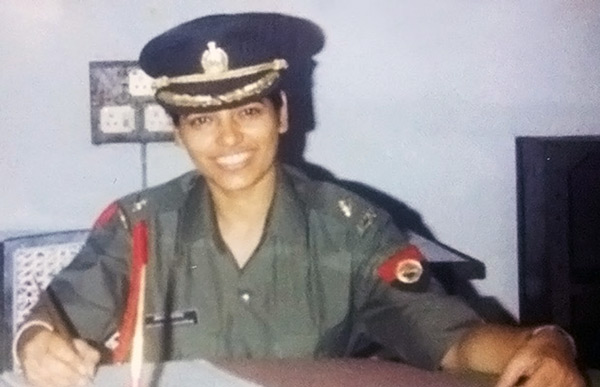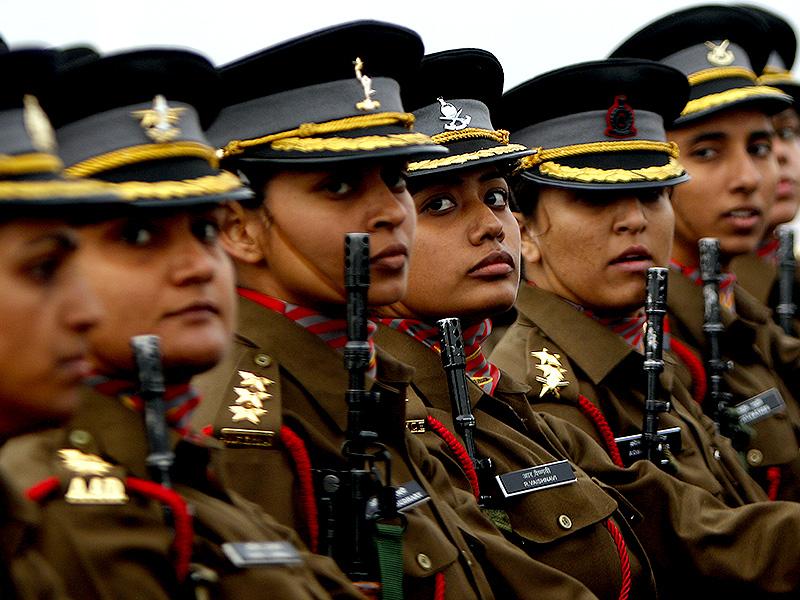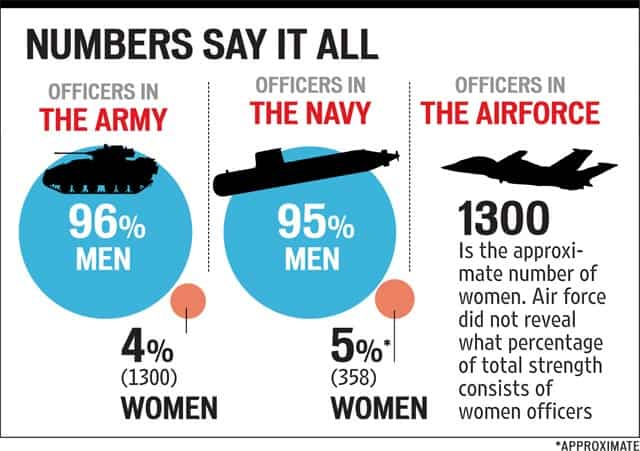How often have we heard the phrase that women are physically weak and therefore incapable of protecting their country or that military and war are “men’s work” but Lt Col Mitali Madhumita, Priya Jhingan the first lady cadet to join the Indian Army, Lt Nitika Kaul and many more have fearlessly donned the olive green, proved their mettle on the field and brought laurels to the nation.
The debates around the efficiency of women officers in forces are rather absurd given that the historical tales of women donning armor are not only a very integral part of the Indian mythology but were very much a reality during India’s struggle for Independence. This article aims to take a look at the gender dynamics in the Indian Armed Forces and trace the roots of women’s involvement in the forces.
Women have been continuously fighting a tough and daunting battle for equal opportunities in the Indian Army. On September 8, 2021, the Centre gave the “good news” and informed the Supreme Court of the country that women candidates will be finally recruited for permanent commission through the National Defence Academy fresh out of school. Up till now, women were eligible for entry into the Army only through the Officers’ Training Academy. Taken together with the Centre’s recent decision of opening the doors of Sainik Schools for girls across the country, it lays a roadmap for correcting the equity deficit.

Though an occasional bright comet of female leadership has streaked through the war skies every now and then, the most common perception of women’s involvement in warfare, through the ages, has been in support roles only. Traditionally, societies have always relied on women to defend the home front and when required, to be willing camp followers providing logistics support – thereby freeing men for the serious business of war. These established boundaries of social conduct were occasionally transgressed by women who took to arms for reasons of necessity, arising due to circumstances, a sense of duty, and at times out of sheer spirited patriotism.
Women have played an integral role in India’s freedom struggle whether it be through participation in protest and resistance movements or as warriors on the battlefield. The Rani Of Jhansi Regiment – an all-woman infantry combat unit of Azad Hind Fauj reminds us of the fact that there shouldn’t be any distinction between males and females while fighting for the cause of the country’s freedom. Women were regarded as “the vanguard of the freedom struggle” by Mr.Bose. It is believed that Netaji read an article written by an Englishman after the revolt of 1857 that said “if there had been a thousand women like the Rani, we could never have conquered India”.
Shockingly, despite being a backbone of the freedom struggle women found no space for themselves in the armed forces in the New Independent India. The Army Act of 1950, the Air Force Act of 1950, and the Navy Act of 1957 barred women from serving in the Indian Armed Forces, and that any digression from these acts would require special notification.
Military Nursing Service formed in 1880 under the British Raj played a stellar role in World War 1 and further women’s wing was expanded with the formation of the Women’s Auxiliary Corps. Military Nursing Service was the only institution that continued to welcome women. In both, world wars nurses had fought courageously and about 350 of them had either died or were captured as prisoners of war. The Army Act of 1950 granted them regular commissions and ranks from lieutenant to colonel.

Women Officers were finally inducted into Indian Armed Forces in 1992 as Short Service Cadre as the decision was approved by the Parliament. This was more of a tokenistic measure to be politically correct and gain popular support rather than a genuine attempt to bridge the gender gap in armed forces. The initial terms of engagement were five years, which was further extended to 10 years with the option of extension by another four years(10+4).
Women in the military have had to battle it out at every step in the last 30 years from seeking a permanent commission to combat positions; the journey has not been an easy one. Women have moved ahead relatively faster in other fields, but in the armed forces the journey to attain even this amount of equality has taken over a lot of years.
Significant progress has been made if we look at the gender dynamics in Indian Forces, more women are being recruited in many more branches and offered key positions but there is an urgent need to take proactive measures in favor of women by the armed forces authorities themselves. In February, the apex court in a landmark ruling stated that women officers would be allowed to take up permanent commission and command roles which was exclusively a male domain till then.
Even the decision that women can finally enroll themselves in NDA came because the Supreme Court was hearing a petition filed by advocate Kush Kalra which raised the issue of exclusion of eligible and willing female candidates from joining the NDA solely on the ground of sex which allegedly was a violation of the Article 14, 15, 16 and 19 of the Constitution.
Apart from the legal measures in order to succeed on the path to gender equity the social realities need to be changed. A closer look at the verdict reveals that only unmarried women can sit for NDA examination once again reimposing the gendered segregation in society and denial of opportunities to married women. According to Colleen Burke, the notion of ‘combat’ in the ideological structure of patriarchy plays a very central role in the construction of concepts of ‘manhood’ and justifications of the superiority of maleness in the social order.
The cliche that the military makes a man out of a boy is a very familiar one, it might sound like a utopian view but if you are a man, you remain one irrespective of your profession. What kind of a man is created? Is it someone capable of both dominance and submission, aggression and compassion, or is it a man who values only superficial masculine traits?

Only those characteristics considered to be a good soldier are validated and stereotypically they are the masculine ones. Masculine characteristics like aggressiveness, bravery, endurance, and discipline are demanded and any Feminine characteristics such as compassion, cooperation, or nurturing are belittled and weeded out. These ideas become deeply ingrained and society accepts that it is just “natural” that boys are aggressive and girls are passive, and gender-specific roles are considered “common sense”. The defense academies where officer cadets from all three forces are trained, need to eradicate these gender ideologies and become more inclusive.
War and militarism may be “men’s business,” but women are undeniably affected by it so they have every right to be a part of it. As an individual, I highly respect the Indian Armed Forces but they still have a long way to go in terms of gender parity. I am sure an efficient and cohesive system will evolve over time. The day is not far when women will be playing a far more active role in military formations. And as history tell us it will not be something new.
Written by- Chandrika Sharma
